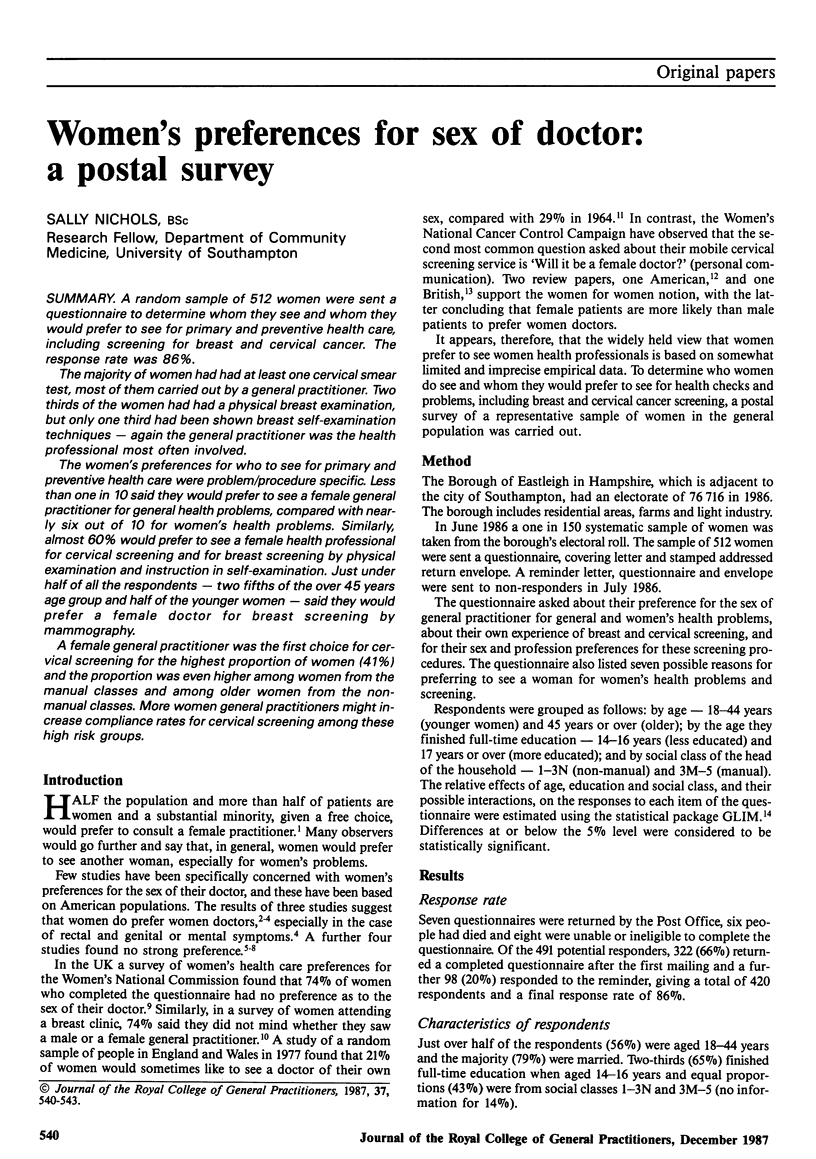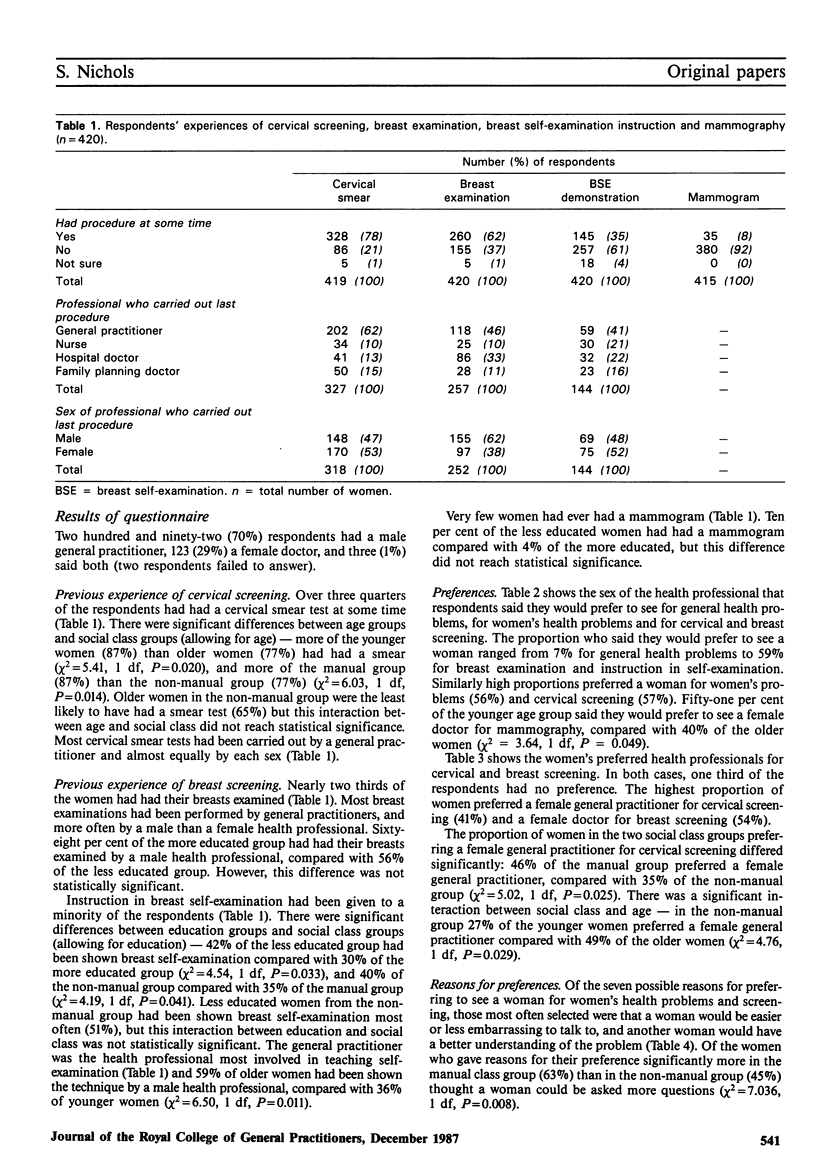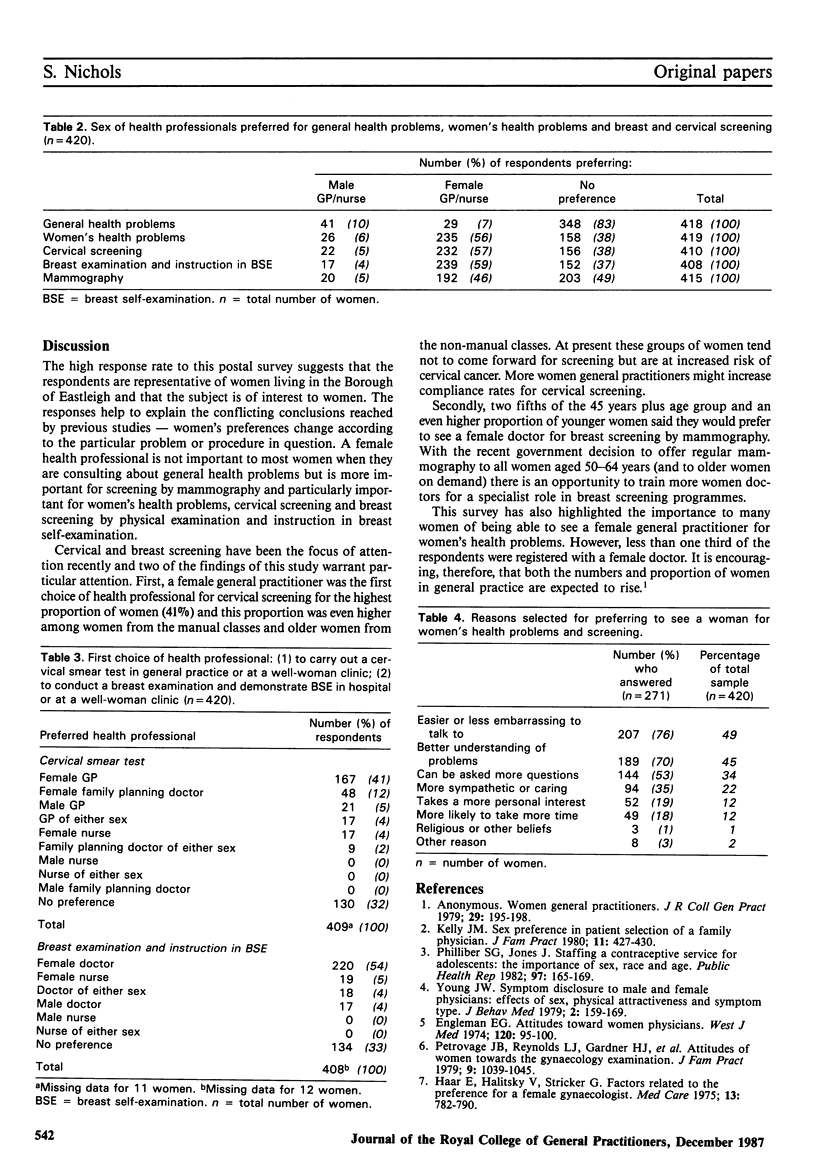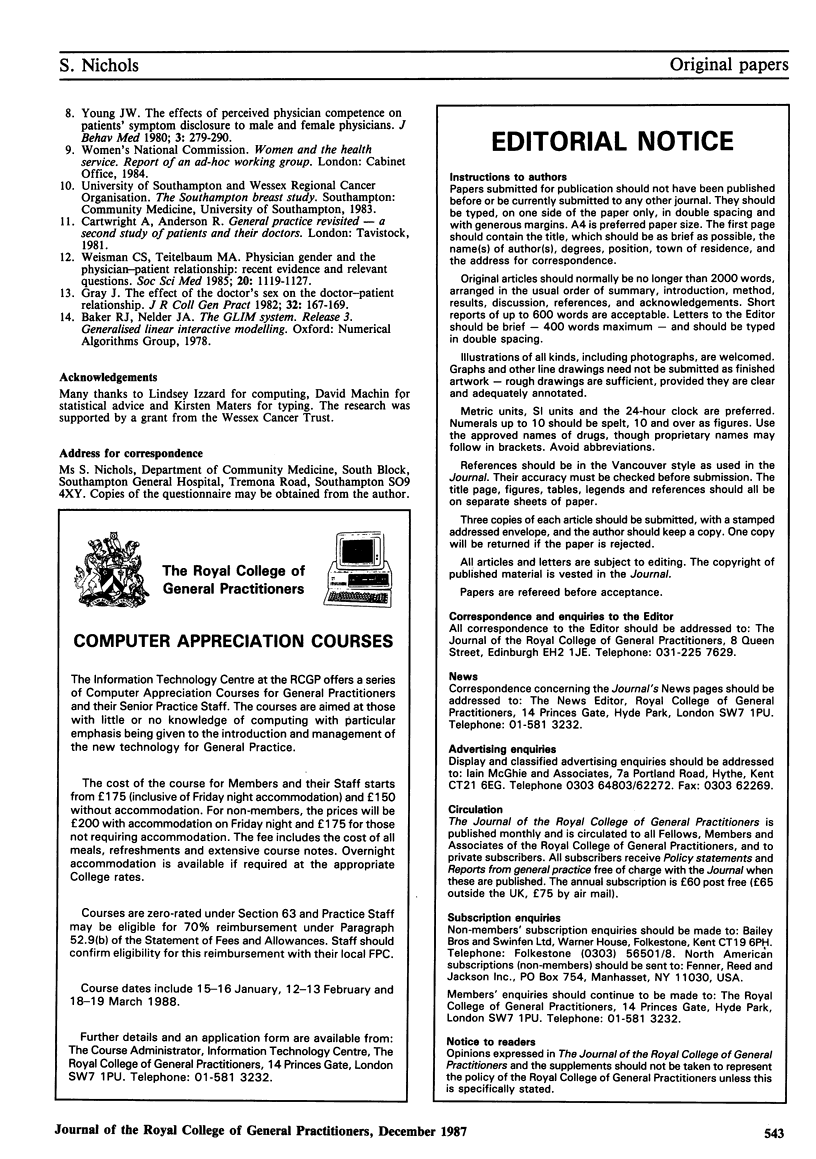Abstract
A random sample of 512 women were sent a questionnaire to determine whom they see and whom they would prefer to see for primary and preventive health care, including screening for breast and cervical cancer. The response rate was 86%.
The majority of women had had at least one cervical smear test, most of them carried out by a general practitioner. Two thirds of the women had had a physical breast examination, but only one third had been shown breast self-examination techniques – again the general practitioner was the health professional most often involved.
The women's preferences for who to see for primary and preventive health care were problem/procedure specific. Less than one in 10 said they would prefer to see a female general practitioner for general health problems, compared with nearly six out of 10 for women's health problems. Similarly, almost 60% would prefer to see a female health professional for cervical screening and for breast screening by physical examination and instruction in self-examination. Just under half of all the respondents – two fifths of the over 45 years age group and half of the younger women – said they would prefer a female doctor for breast screening by mammography.
A female general practitioner was the first choice for cervical screening for the highest proportion of women (41%) and the proportion was even higher among women from the manual classes and among older women from the nonmanual classes. More women general practitioners might increase compliance rates for cervical screening among these high risk groups.
Full text
PDF



Selected References
These references are in PubMed. This may not be the complete list of references from this article.
- Engleman E. G. Attitudes toward women physicians. A study of 500 clinic patients. West J Med. 1974 Feb;120(2):95–100. [PMC free article] [PubMed] [Google Scholar]
- Gray J. The effect of the doctor's sex on the doctor-patient relationship. J R Coll Gen Pract. 1982 Mar;32(236):167–169. [PMC free article] [PubMed] [Google Scholar]
- Haar E., Halitsky V., Stricker G. Factors related to the preference for a female gynecologist. Med Care. 1975 Sep;13(9):782–790. doi: 10.1097/00005650-197509000-00008. [DOI] [PubMed] [Google Scholar]
- Kelly J. M. Sex preference in patient selection of a family physician. J Fam Pract. 1980 Sep;11(3):427–433. [PubMed] [Google Scholar]
- Petravage J. B., Reynolds L. J., Gardner H. J., Reading J. C. Attitudes of women toward the gynecologic examination. J Fam Pract. 1979 Dec;9(6):1039–1045. [PubMed] [Google Scholar]
- Philliber S. G., Jones J. Staffing a contraceptive service for adolescents: the importance of sex, race, and age. Public Health Rep. 1982 Mar-Apr;97(2):165–169. [PMC free article] [PubMed] [Google Scholar]
- Weisman C. S., Teitelbaum M. A. Physician gender and the physician-patient relationship: recent evidence and relevant questions. Soc Sci Med. 1985;20(11):1119–1127. doi: 10.1016/0277-9536(85)90189-3. [DOI] [PubMed] [Google Scholar]
- Young J. W. Symptom disclosure to male and female physicians: effects of sex, physical attractiveness, and symptom type. J Behav Med. 1979 Jun;2(2):159–169. doi: 10.1007/BF00846664. [DOI] [PubMed] [Google Scholar]
- Young J. W. The effects of perceived physician competence on patients' symptom disclosure to male and female physicans. J Behav Med. 1980 Sep;3(3):279–290. doi: 10.1007/BF00845052. [DOI] [PubMed] [Google Scholar]


